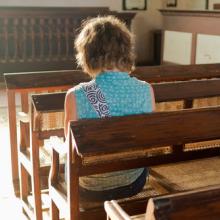Catholic social teaching's influence on various organizations.
organizations
THIS IS NOT a column full of hand-wringing about the moral decay of U.S. society. Nor is it about my concern for the souls of my fellow citizens who are atheists, agnostics, or some other stripe of nonbeliever. I am worried about the growing number of religious “nones” in the United States, but not for those two reasons.
Let me be clear about something before continuing: Many of the people I love and admire most are religious “nones”—those who indicate “none of the above” on religious preference surveys. They include people of high intellect, great sensitivity, and deep character. In fact, many of them could give lessons in such areas to some of the religious people I know.
What they do not do is build hospitals, schools, colleges, or large social service agencies. Such institutions (when not built by the government) have generally been founded and supported by religious communities in the United States. This is not so much because religious people are always better human beings; it’s because religious communities value and organize such work at significant scale.
Religious communities play a profound role in U.S. civil society. About one out of every six patients in the U.S. is treated by Catholic hospitals. Most, if not all, have some sort of explicit commitment to serving the poor because of their faith identity. There are nearly 7,000 Catholic grade schools and high schools in the U.S., and more than 260 colleges. This is to say nothing of the refugee resettlement, the addictions counseling, or the services for homeless men and battered women provided by Catholic social service agencies.
AS MY EXTENDED family gathered around the Thanksgiving dinner table before the latest market crash, conversation with cousins flowed about friends making big money with technology start-ups: “more, more; faster, faster; bigger, bigger; louder, louder.”
A hail of laughter greeted me when I quietly muttered that my ambition was, “poorer, poorer; slower, slower; smaller, smaller; quieter, quieter.”
When Sojourners started in 1971, I was 23 years old. Seven young seminary students pooled $100 each and used an old typesetter that we rented for $25 a night above a noisy bar to print 20,000 copies of the first Post-American, the predecessor to Sojourners magazine. We took the bundles in our trucks and cars to student unions in college campuses across the country and began collecting subscriptions in a shoebox kept in one of our rooms.
For more than a decade, we shared our money in common, trying to live as the early Christians (see Acts 2), and allowed ourselves $5 a month for personal spending. The highest-paid staff person was a young woman from a neighborhood family who wanted an evening cleaning job.
We worshiped together twice a week and opened our homes to our neighbors. When our first child was born, Jackie and I brought him home to a row house in Columbia Heights in D.C. where we were living with 18 other people, including an African-American family and a Lakota couple with some of their extended family from the reservation in South Dakota. You had to be a bit crazy to be in the early community. And yes, we were poor. And we were small.
